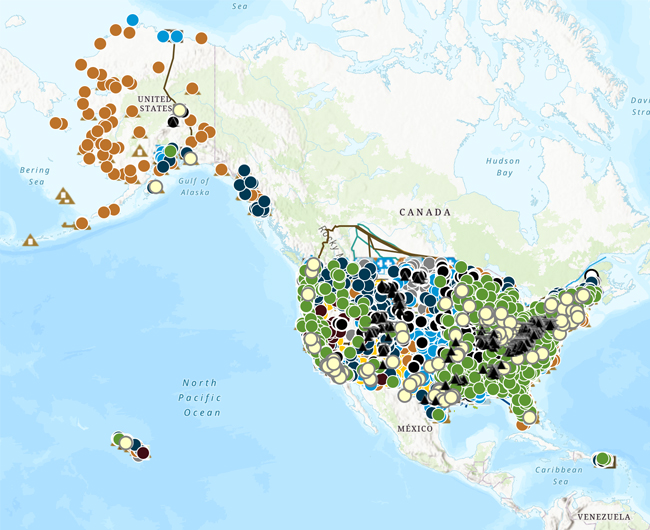Profile Overview
U.S Energy Atlas with total energy layers
 View the interactive map
View the interactive map Quick Facts
- Alaska's proved crude oil reserves of 3.2 billion barrels are the fourth largest of any state. However, many of Alaska's oil fields are mature, and in 2023 the state's oil production averaged 426,000 barrels per day, the lowest level since 1976.
- Alaska ranks fourth in the nation in natural gas gross withdrawals, most of which are reinjected into oil fields to help maintain crude oil production rates.
- Many rural communities in Alaska rely primarily on diesel-fueled electric generators for power, and Alaska ranks second only to Hawaii in the share of its total electricity--slightly more than one-tenth in 2023--generated from petroleum.
- Alaska's per capita energy consumption is the highest in the nation in part because of the state's small population, harsh winters, and energy-intensive industries.
- In 2023, Alaska generated about one-fourth of its total electricity from renewable energy sources. The state has a non-binding goal to generate 50% of its electricity from renewable and alternative energy sources by 2025.
Last Updated: April 18, 2024
